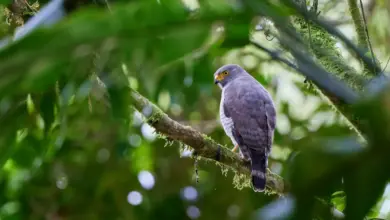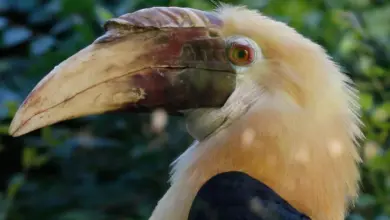Hooded Pitohui
The Hooded Pitohui, Pitohui dichrous is widespread throughout New Guinea.
This species, together with its close relatives, the Variable Pitohui and the Brown Pitohui, are the first documented poisonous birds. A neurotoxin called homobatrachotoxin found in the bird’s skin and feathers, causes numbness and tingling in those touching the bird.
The hooded pitohui was the first poisonous bird to be identified. Of the three poisonous Pitohuispecies, the hooded Pitohuis (Pitohui dichrous) are the most brightly colored and by far the most poisonous.
It is followed by the variable pitohui (Pitohui kirhocephalus) and the rusty pitohui (Pitohui ferrugineus).
The Hooded Pitohuis acquires its poison from part of its diet, the Choresine beetle of the Melyridae family. This beetle is also a likely source of the lethal batrachotoxins found in Colombia’s poison dart frogs.
Description:
The Hooded Pitohuis are brightly colored, with a brick red or orange belly and a jet-black head.
It has been suggested that the birds’ bright colors are an example of aposematism (warning coloration), and the similarity of the Hooded Pitohuis and some forms of the Variable Pitohui might then be an example of Müllerian mimicry, in which dangerous species gain a mutual advantage by sharing coloration so that an encounter with either species trains a predator to avoid both. (Dumbacher and Fleischer, 2001)



